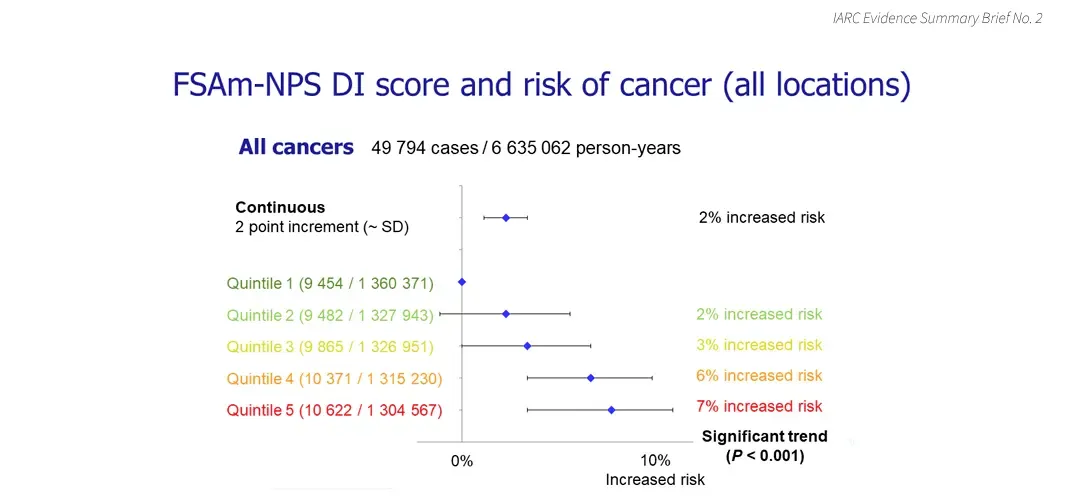Diet and healthy eating: nutriscore and nutrients

It displays the ratio of healthy to unhealthy nutrients, which can positively or negatively affect your body, brain, and mood. This helps you make healthier food choices and increase the number of nutritionally beneficial foods in your diet.
How is Nutri-Score computed?
The Nutri-Score is calculated using data from the nutritional information table found on food packaging, including details about energy, saturated fat, sugars, salt (sodium), fiber, protein, and the percentage of fruits, vegetables, and legumes.
- Negative points are assigned for higher amounts of energy (calories), saturated fat, sugars, and salt—nutrients that should be limited in the diet.
- Positive points are awarded for higher proportions of fiber, protein, and fruits, vegetables, and legumes—nutrients and ingredients that should be promoted. (Note: nuts and vegetable oils are no longer counted as positive factors in the updated system.)
The final Nutri-Score is calculated by subtracting the positive points from the negative points. The product is then assigned a score from A (best nutritional quality) to E (poorest nutritional quality).
Nutriscores
Very good nutritional quality
- Positive factors: Very high in beneficial nutrients—fiber, protein, fruits, vegetables, and legumes.
- Negative factors: Very low in energy (calories), saturated fats, sugars, and salt/sodium.
- Result: Foods with a score of A have a strong balance of high-quality ingredients and very few nutritional drawbacks. They are the healthiest choices and can be eaten regularly as part of a balanced diet.
Good nutritional quality
- Positive factors: Good content of fiber, protein, and/or fruits and vegetables.
- Negative factors: Moderate amounts of saturated fats, sugars, or salt/sodium, but not high enough to outweigh the positive aspects.
- Result: Foods with a B score offer solid nutrition, with some minor negative factors, but are still healthy choices for regular consumption.
Average nutritional quality
- Positive factors: Contains some beneficial nutrients, such as protein or fiber, or a moderate amount of fruits and vegetables.
- Negative factors: Noticeable presence of less healthy elements like added sugars, salt/sodium, or saturated fats, which begin to outweigh some positive qualities.
- Result: Foods with a C score are moderate choices—okay for occasional consumption, but you should be mindful of their less healthy ingredients.
Poor nutritional quality
- Positive factors: May contain some nutrients like protein or fiber, but in lower amounts.
- Negative factors: High in saturated fats, sugars, salt/sodium, or energy (calories), which strongly reduce its overall health value.
- Result: Foods with a D score are less healthy options, and their frequent consumption should be limited due to their higher content of less desirable nutrients.
Bad nutritional quality
- Positive factors: Minimal or none—very low in beneficial nutrients.
- Negative factors: Very high in sugars, saturated fats, salt/sodium, or calories; often provides little or no fiber, protein, or healthy ingredients.
- Result: Foods with an E score are the least healthy, with a high concentration of negative nutrients and virtually no beneficial ones. These should be consumed only rarely, if at all.
Formula calculations
According to the 2022 Nutri-Score algorithm, the system assigns up to 15–20 points for negative components that should be limited in the diet, such as energy (calories), saturated fat, sugars, and salt. For positive components that should be promoted—fiber, protein, fruits, vegetables, and legumes—up to 5–7 points can be awarded. Nuts and vegetable oils are no longer counted as positive components.
To determine the Nutri-Score label for a product (A, B, C, D, or E), the total points for beneficial ingredients are subtracted from the total points for unfavorable ingredients. The resulting score classifies the product into one of five nutritional quality levels, from A (best) to E (worst). The scale typically ranges from negative to positive values, and the lower the score, the higher the nutritional quality of the food.
Scepticism
While front-of-pack nutrition labels aim to guide healthier choices, evidence from real supermarket studies is limited and mixed ▸ This raises doubts about how effective systems like Nutri-Score truly are in everyday use ▸ Can Nutri-Score be trusted as a reliable indicator of food health? ▸ Its scientific support and practical impact remain unproven and contested.
Nutri-Score lacks conclusive real-world evidence and faces significant scientific, methodological, and regulatory criticism.
- Real-world studies on Nutri-Score are scarce and inconclusive
- A 2021 supermarket study using electronic shelf labels showed only mixed effects on consumer behavior.
- No study has tested full-color Nutri-Score labels across a complete product assortment in real retail settings.
- Scientific and methodological flaws undermine its reliability
- It doesn’t account for package size, vitamins, processing level, or glycaemic index.
- It may mislead by penalizing natural, organic, or regional foods while favoring processed ones.
- Expert and regulatory bodies caution against premature rollout
- 80% of experts say it doesn’t ensure a balanced diet even when top-rated products are chosen.
- EFSA found insufficient evidence to validate Nutri-Score as a health claim tool.
- Legal and consumer protection issues have emerged
- Italy’s antitrust authority opened investigations against companies and apps using Nutri-Score.
- Concerns include misleading consumers and overstating health benefits based on simplified scores.
FoodIntake - calories from recipe calculator, recipe nutrition converter. Easily find calories in a recipe.






